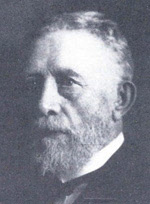Stylometrics
Aurelia

Aurelia was the mother of Julius Caesar, who made a revolution in the government of Rome, taking it from Senatorial to Royal. Our stylometric test BIRD also leads to something new — not something won in battle, but an ongoing contribution to the understanding of ancient texts.
Were the Old Testament texts written by one person, or at one time, as many think? Or were they written by many, over a period of time, as their diverse and sometimes contradictory content implies? Both cannot be correct. BIRD results are here called on to provide evidence for one alternative or the other. As it turns out, they support, or are compatible with, the text growth alternative.
Interpreting
BIRD Results
From the Style
page, we repeat the guidelines for interpreting the D numbers on BIRD tables:
Extreme: D = 1.00 or more. Not the same author or source; a break in continuity.
High: D = 0.75 ~ 0.99. A different author, or the same author in a disturbed mood.
Normal: D = 0.51 ~ 0.76. The usual thing. Perhaps different chapters in the same work.
Low: D = 0.50 or less. A continuous narrative, or when a passage has another "in mind."
Now we consider some specific BIRD results. This first group speaks to the main issue . . .
A.
BIRD Results Suggesting Text Growth
Some
BIRD results refute the single-author view directly, by showing that two texts
yield an Extreme reading, and so cannot be by the same person, Moses or any other.
Other results support other evidence for interpolation, such as incompatibility
with context, and thus imply text growth in a different way. The growth of a text
over time argues against its composition at any one time.

Martin
Noth
A1.
Genesis - Deuteronomy. The Pentateuch. No
one person wrote all five, or any two, of these texts.
A2. Genesis 14.
Saving Lot. Incompatible with everything else in Genesis, or in the Pentateuch.
A3.
Exodus 8:38-10:29. The Miracles of Yahweh. Leaving behind what Pharaoh's magicians
can do.
A4. Exodus 20. The Decalogue. As Noth
and others have seen, it is a later addition to Exodus.
A5. Exodus 32-34.
The Golden Calf. The beginning and end of this incident are marked off stylistically.
A6.
Leviticus 13. Leprosy. The instructions for sequestring cases of leprosy are
stunningly modern.
A7. Deuteronomy 17:14-20. The Law of the King. This
critique of Solomon is intrusive in Deuteronomy.
A8. Judges 11:30-40. Jephthah's
Daughter. This touching incident was later added to Judges.
A9. Judges
13-16. Samson. His already thrilling story later received a still more thrilling
extension.
. . . while this second group has a more literary character:
B.
BIRD Results Showing Literary Aspects of Certain Passages
Other
BIRD results illustrate the artistry of individual authors, or show how one text
is aware of, and either directly or implicitly acknowledges, another text. It
will appear that later texts are typically longer, or more exciting, or give a
more important role to women, than earlier texts.

Bernhard
Duhm
B1.
Genesis 5-7. The Fathering of Mankind. But how? That story gets repeatedly
adjusted.
B2. Exodus 36-40. Ending Exodus. Bringing it to a literarily
satisfying conclusion.
B3. Numbers 11:4-35. Quails. It toughens up Exodus
16:1-30. Is the relationship stylistically visible?
B4. Numbers 22-24.
Balaam. The last two of these three chapters elaborate the first.
B5.
Numbers 27 and 36. The Daughters of Zelophehad. How similar are these two court
cases?
B6. Ruth 1-4. The high point of her story is not the emotional
Ruth 1, but the legalistic Ruth 3.
B7. 2 Kings 22-24. Bald Elisha. One
more place where an otherwise lost tradition can be glimpsed.
B8. Isaiah
1-66. Duhm was right about there being three compositional
stages in this long text.
B9. Isaiah 24-27, What is going on in in this
endlessly debated group of four chapters?
To request a BIRD reading for a passage not included here, please use the mail link below.
![]()
BIRD has its limitations. It uses only part of the relevant data. Its readings are subject to interference from interpolations or other extraneous matter in the passages being tested. Smaller samples are increasingly likely to give false positives. But BIRD has this sovereign advantage: it is simply a process. It has no preferences about the outcome. It doesn't care about our thoughts, and it has none of its own.
Some say that all these texts were written in the year 0400. The texts themselves tell a different story. Stylometrics adds its voice to theirs, helping readers to follow along, as older ideas are modified, new ones make their appearance, and the process of change continues to happen.
Materials on this site are Copyright © 1993 by the Warring States Project or by individual authors
Contact The Project